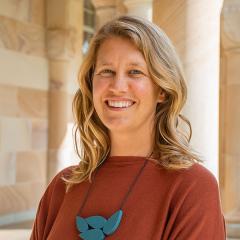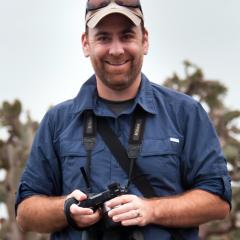A group of international researchers led by former CBCSer Dr Isaac Brito-Morales have developed a novel three-dimensional approach to marine conservation that could help expand protected ocean areas by up to 30% this decade.
Dr Brito-Morales says the approach can help conservationists and governments to assess the biodiversity of our oceans in greater detail than ever before.
“We need to stop thinking about the world as a two-dimensional map when it comes to conservation,” Dr Brito-Morales said.
“In the past, most marine protected areas were designated in shallow coastal areas, such as coral reefs.
But in the open ocean, the surface can be many kilometres from the sea floor. They’re completely different ecosystems.
“We’re attempting to conserve biodiversity in different depth zones while also observing how climate change is impacting each zone.”
A 3D climate-smart MPA network
The researchers hope the approach will help inspire the creation of larger, more detailed and effective marine protection areas across different depths, to identify areas that deserve protection now and into the future.
“By looking at the high seas, which make up 61% of the total ocean area, we’ve identified areas where species are less likely to migrate from as our oceans warm – think of them as climate change refuges,” Dr Brito-Morales said.
“These areas make up only about 6% of the high seas, but are home to a number of at-threat species, such as marine mammals, seabirds, sea turtles and many fish species.”
Increasing marine protection
Currently, 71 countries including Australia have a goal of increasing marine protection targets to 30% of the world’s oceans by 2030.
Senior CBCS and CSIRO researcher Professor Anthony Richardson says the biggest challenge is that most marine protected areas are within coastal zones inside the “marine borders” or exclusive economic zones of each country.
“If we want to achieve the target without protection for high seas habitats, then marine protected areas would need to cover 75 per cent of the area of these zones, which is an unlikely and expensive outcome,” Professor Richardson said.
“So, protecting high seas habitat – or critical areas of it – is essential.”
The global team also included CBCS’s Associate Professor Carissa Klein, Dr Daniel Dunn, Professor Hugh Possingham and Rosa Mar Dominguez along with UQ’s Dr Jason Everett, collaborating with Professor David Schoeman from the University of the Sunshine Coast, Hokkaido University’s Associate Professor Jorge García Molinos and Professor Michael Burrows from the Scottish Association for Marine Science.
Read the paper here.
Read the UQ News story here.




